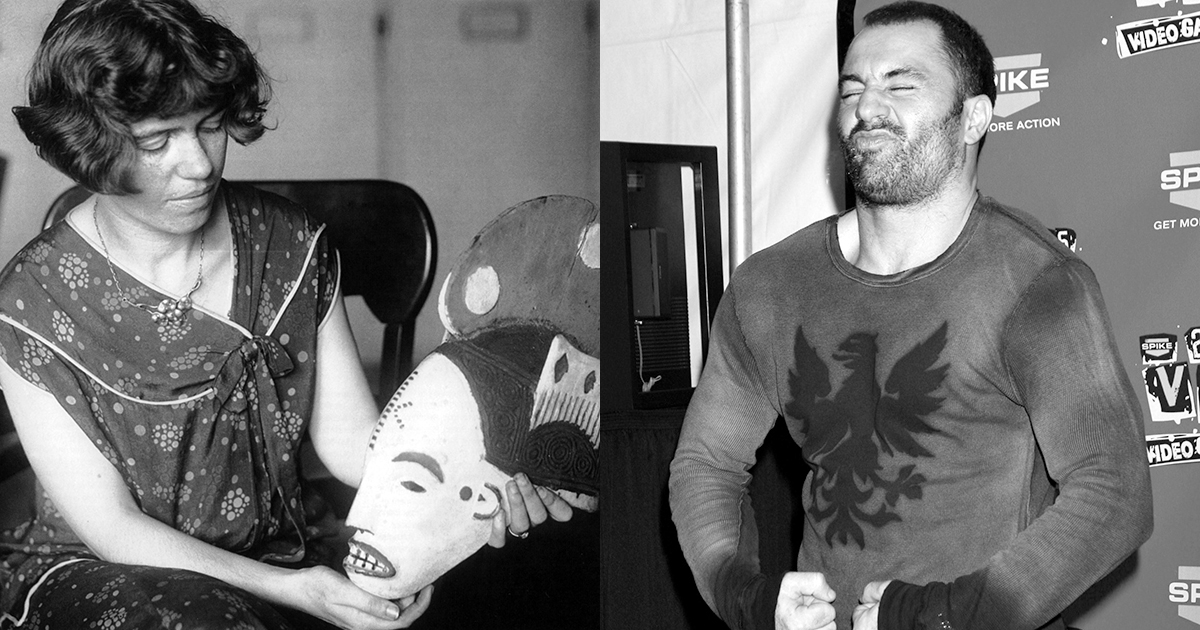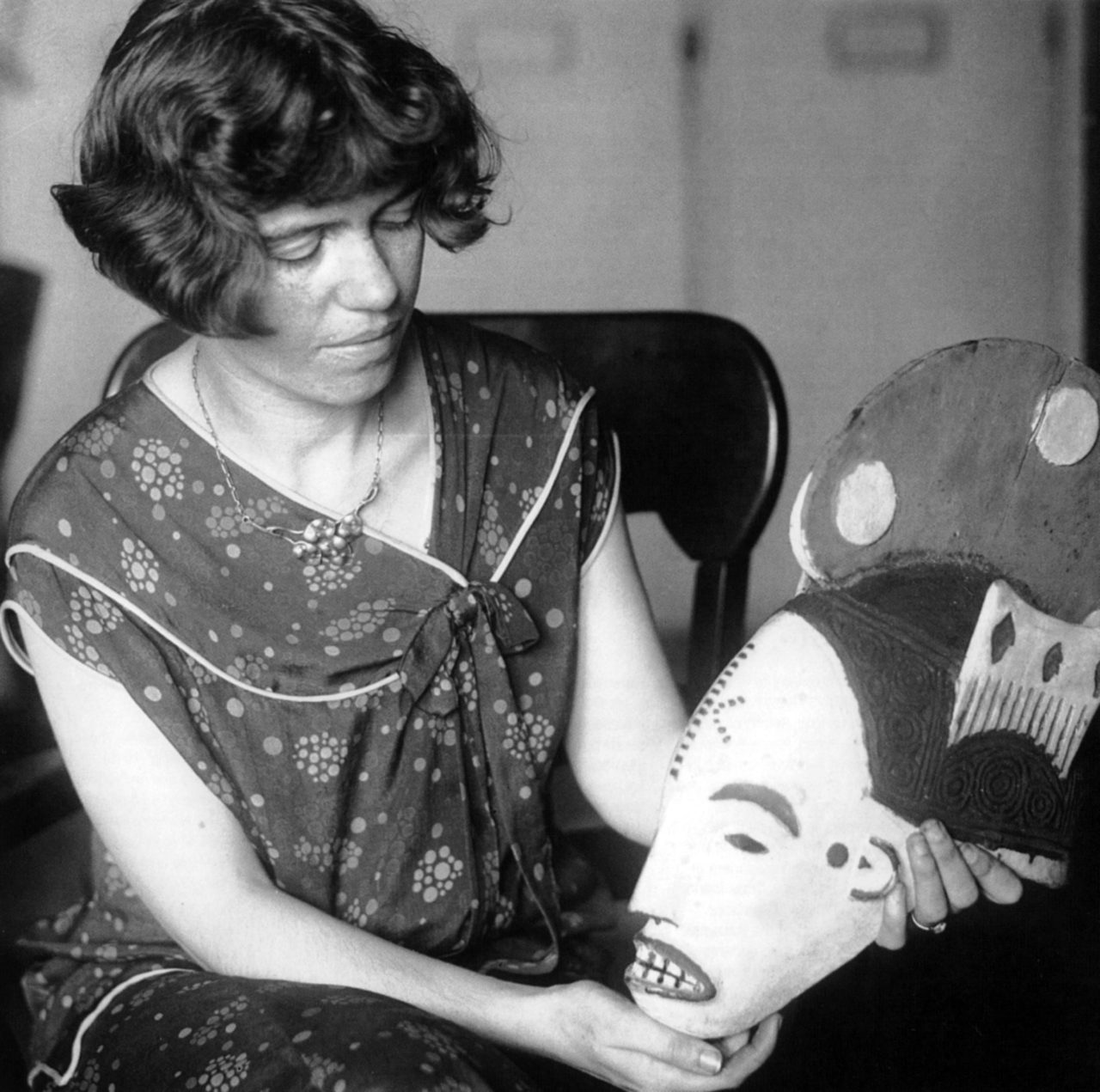
In the summer of 1930, the anthropologist Margaret Mead and her second husband and fellow anthropologist, Reo Fortune, made their way to the Omaha Reservation in northeastern Nebraska. At age 28, Mead had already gained renown for her ethnographic study Coming of Age in Samoa. In Samoa, she had found a society whose looser sexual mores she came to view as a challenge to rigid Western norms. But in Nebraska she encountered a people that had already assimilated into Western civilization. In the decades after their catastrophic subjugation and confinement to the reservation, she discovered, many Omaha had embraced a new syncretic religion, the Native American Church, fusing elements of Christianity with native traditions, notably the ritual use of the hallucinogenic peyote cactus. Mead believed that by enabling the transcendence of familiar categories, the Omaha use of peyote was part of their attempt to forge a new culture in the wake of losing their own.
In Tripping on Utopia: Margaret Mead, the Cold War, and the Troubled Birth of Psychedelic Science, the historian Benjamin Breen presents Mead’s work among the Omaha as the origin point of an idea that went on to shape a generation of intellectuals: “That drugs” — and hallucinogens in particular — “could be a tool for the creation of a new culture.” Mead’s main insight about the peyote cult, according to Breen, is that it was “an innovative response to modernity rather than a remnant from a vanishing world.”
This response, Mead concluded, held lessons for modern society as a whole. Like many anthropologists of her era, she feared that advanced technological civilization was laying waste to the cultural traditions and belief systems that allowed people to orient themselves in the world and find meaning in it. All modern people therefore faced some version of the dislocation undergone in a drastic form by peoples like the Omaha. Rather than nostalgia or a retreat from the modern world, Mead believed that what was needed was a deliberate process of cultural evolution — in which mind-altering substances might play a role.
Over the subsequent decades, Mead and her third husband, Gregory Bateson, would strive for just this transformation, focusing their attention on a newly synthesized hallucinogenic substance of astonishing potency: LSD. To employ a common comparison, the new drug was doing for the mind what the splitting of the atom had done for matter. Both technologies possessed great danger but also immense potential — if harnessed to the right ends.

But no less than atomic science, the new science of psychedelics was soon absorbed into the projects of the burgeoning American military–industrial complex, which was more interested in pursuing strategic advantage over its Soviet rival than in healing the psychic rifts of modern society. Breen never explicitly answers the question of whether the utopian dreams that Mead, Bateson, and their collaborators invested in psychedelics failed because they were instrumentalized for geopolitics or because they were misguided in the first place. But it is worth asking, because a new psychedelic gospel has emerged in recent years that has revived many of the themes of the older one — while omitting the sense of its cultural potency.
Tripping on Utopia usefully fills in a gap in the literature. The story of psychedelics, as it is often told, begins with LSD revealing itself to the unsuspecting Albert Hofmann in a Swiss lab, and continues with its dissemination into mainstream culture courtesy of pioneers like Timothy Leary and Ken Kesey. Then comes the Nixon-era backlash, propelled by horror stories about bad trips, which pushed the drug back to the margins. Finally, we get to the past five years or so, when a more relaxed cultural attitude to mind-altering substances has made scientific research on psychedelics and their potential medical and therapeutic applications possible again. Just as the ‘60s had Leary and Kesey, the ongoing “psychedelic renaissance,” as it has come to be known, has elevated a new generation of popularizers as varied as Michael Pollan and Joe Rogan.
But just as books like Pollan’s How to Change Your Mind (2018) are newly proclaiming the therapeutic possibilities of hallucinogens, other authors are revisiting the dark uses to which they were put in an earlier era. In the period between Hofmann’s 1943 eureka moment and the countercultural embrace of psychedelics, the CIA undertook its top-secret MKUltra project, under the auspices of which unsuspecting people were dosed with LSD to explore its utility for psychological warfare, brainwashing, and mind control, sometimes with tragic results. Different versions of this story have been told in Errol Morris’s 2017 Netflix docudrama Wormwood, about MKUltra victim Frank Olson; Stephen Kinzer’s 2019 biography Poisoner in Chief, about CIA chemist Sidney Gottlieb; and Tom O’Neill’s 2019 book Chaos, which sensationally reconstructs the possible connections between MKUltra and the Manson murders in 1969.
The achievement of Benjamin Breen’s new book is to synthesize these disparate parts of the story — the hopeful and the horrifying — and to demonstrate a key difference between Mead’s and Bateson’s view of psychedelics and the view increasingly in vogue today: Whereas today’s popularizers tend to promote psychedelics as means of individual self-discovery and self-improvement, Breen’s subjects were mainly concerned with the collective predicament of humanity in the modern era. Their concern was that the acceleration of social change was prompting a retreat into rigid cultural norms instead of an expansion of the range of human possibilities. In Breen’s words, they hoped psychedelics could be part of “a new set of tools for reprogramming minds and societies stuck in self-destructive feedback loops.”
During the Second World War, Mead’s and Bateson’s pursuits began to intersect with less idealistic projects, as it became evident to them that their work on the deliberate alteration of consciousness had relevance to cutting-edge research on propaganda, psychological warfare, and the possible use of drugs as a weapon of war. Galvanized to fight the fascist menace, Bateson signed up for the Office of Strategic Services, the precursor to the CIA. In this role, he studied Nazi propaganda techniques and researched the utility of hypnosis in POW interrogations. “He concluded,” Breen writes, “that if the Nazis were using science for manipulation, scientists on the other side were duty-bound to contribute their own expertise to combat it.”
The dropping of the atomic bombs in 1945 further convinced Mead and Bateson of the urgency of their project. As Bateson argued in a memo written immediately after he heard the news from Hiroshima and Nagasaki, the escalation of humanity’s destructive capacity was making the dangers of direct combat intolerable, meaning psychological warfare would come to play an even greater role in the future. At the same time, the nuclear blasts deepened the psychic traumas and anxieties and heightened sense of precariousness afflicting the modern world. In the postwar years, Mead, Bateson, and like-minded intellectuals joined forces to develop “a science of human potential that would allow humanity to survive our species’ vastly increased capacity for violence,” Breen writes. The central clearing house for this enterprise was the Macy conferences in New York, named after their supporter, the Josiah Macy Jr. Foundation, which brought together intellectuals from an array of scientific and technical fields. These gatherings were a catalyst for not just psychedelic science but cybernetics, theory of mind, and various other emergent fields of research in medicine and psychology.
Mead’s idealistic vision that psychedelic science could foster a cultural evolution for the betterment of humanity relied on buy-in from the scientific apparatus, whose rapidly expanding Cold War objectives were far less utopian. Bateson, as Breen recounts, developed reservations about this increasing enmeshment with the war machine, and his and Mead’s marriage came to an end in the process. Retrospectively, Bateson questioned the ethics of his wartime activities, as he later saw them being extended into projects like MKUltra. For her part, Mead grew close to several key MKUltra scientists, including the physician Harold Abramson, who shared her soaring intellectual ambitions, viewing LSD as a “pathway to a union of the sciences,” as Breen puts it.
Bateson’s disillusionment didn’t entirely dampen his hopes for psychedelics. But in drawing away from government and professional social-engineering projects, he anticipated the critique of elite social amelioration later articulated by the counterculture, with which he increasingly identified over the course of the 1960s. Instead of Macy-like conferences of scientists attempting to re-engineer societal harmony from above, the new vogue was for “dropping out” of society.
As the utopias of the postwar cultural planners like Mead fell into disrepute, a new, smaller-scale utopianism emerged. One embodiment of this new spirit was the Esalen Institute, an idyllic retreat center in coastal California described by Breen as “a new generation’s take on the Macy conferences,” where Bateson later took up residence as “a kind of in-house philosopher.”
But the small-scale communities forged around psychedelic exploration often descended into harmful and destructive dynamics. Breen documents the abuses perpetrated by Timothy Leary, a pioneer of several such projects, portraying him as a charlatan as unscrupulous as anyone involved in MKUltra. At times, the acid-soaked communes evolved into something far more dystopian than the technocratic society their participants were fleeing, as was the case with Charles Manson’s “family.” Manson only makes a brief cameo in Breen’s book when he shows up at Esalen less than a week before the Tate–LaBianca murders. But Tom O’Neill’s book Chaos presents Manson plausibly as a rogue offshoot of MKUltra experiments, using LSD in more or less the way CIA scientists had tested: as a means of psychic manipulation and control.
The recent re-emergence of psychedelic science is mostly lacking in the collective dimension that was so central to Mead, Bateson, and their generation. Hallucinogens are now just another addition to our endless array of personal lifestyle options. As the trend of microdosing — calibrated to enable continued social and professional functioning while under the influence — makes clear, the drugs are now increasingly seen as an adjunct to everyday “square” existence, a means of coping with the pressures and demands of the status quo. Many of today’s psychedelic gurus enjoin their audiences not to “drop out,” but to use these powerful substances to enhance their productivity and boost their creativity — a message that has found a particularly enthusiastic audience in Silicon Valley. This is no accident: As Fred Turner demonstrated in From Counterculture to Cyberculture, tech culture is the intellectual heir of 1960s ferment. Under the influence of that era’s critique of conformist mass culture, Silicon Valley helped deliver us a society fractured into endless individualized choices and subcultural consumption niches. This transformation prepared the way for today’s psychedelic renaissance.

The architects of MKUltra believed LSD could serve as an instrument of manipulation and mind control, but the substance proved too volatile for their purposes. And where psychedelic advocates once hoped to transform society into something new, today they have reconceived the drugs as useful tools for adjusting to society as it is. For this to happen, a new sort of society had to emerge, one that realized twentieth-century anthropologists’ worst fears about social fragmentation and the loss of shared meaning.
A new human subject also had to emerge who was resigned to this predicament, turning for mitigation to a proliferation of consumer goods and lifestyle accessories, including an ever-expanding pharmacopeia. The effect has largely been to neutralize what was once seen as subversive about these substances. Hence, the psychedelic gurus of the present promise us far less than Leary, and threaten us far less than Manson. Take Joe Rogan: for all the dangers he has been alleged to pose to his vast, youthful audience, his avid promotion of psychedelics has raised relatively few concerns.
Margaret Mead hoped that humanity could expand its values to accommodate the drastic transformations affecting modern civilization. To this end, she influentially advocated for a liberalization of cultural expectations around sex, gender, and other norms. But she also foresaw the alienation and anomie that the fracturing of common values would bring. As improbable as it may seem today, she believed drugs might aid the forging of a new collective consciousness.
In retrospect, it seems obvious that this pursuit would end up looking as it does now: like a misguided social-engineering scheme. But however misguided, the social engineers of Mead’s and Bateson’s milieu who embraced psychedelics were at least concerned with diagnosing and remedying the ills of a rapidly fracturing society. By contrast, the lifestyle influencers hawking psychedelics today lack the intellectual ambition and the incentive to offer their audiences anything other than another consumption niche. Turn on, tune in, write code.
Keep reading our Spring 2024 issue
Highways vs. urbanism • The IVF problem • Depressive AI • Planet B • Subscribe
Exhausted by science and tech debates that go nowhere?